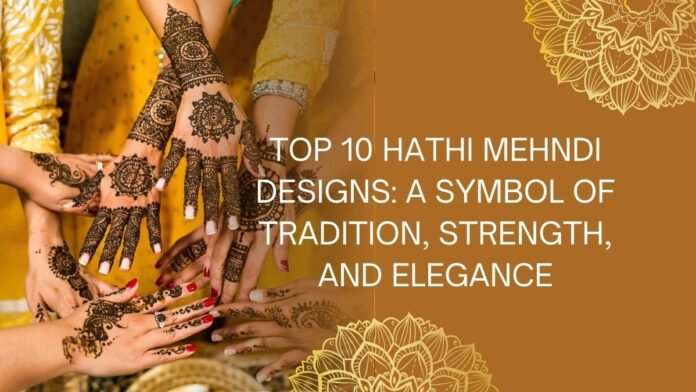Mehndi, or henna, has always been an integral part of South Asian culture, particularly in India and Pakistan. From weddings and festivals to cultural events, mehndi designs grace the hands and feet of women as a symbol of beauty, tradition, and celebration. One of the most captivating and symbolic themes in mehndi art is the hathi, or elephant. Known for its grandeur, wisdom, and strength, the elephant represents royalty and good fortune in many South Asian cultures.
The Hathi Mehndi Design is not just a visual treat, but a deeply cultural emblem that adds regality and storytelling to traditional henna art. In this article, we will delve deep into the top 10 hathi mehndi designs, exploring their significance, artistic patterns, and how each can be used to elevate your mehndi game for any occasion.
1. Traditional Bridal Hathi Mehndi Design
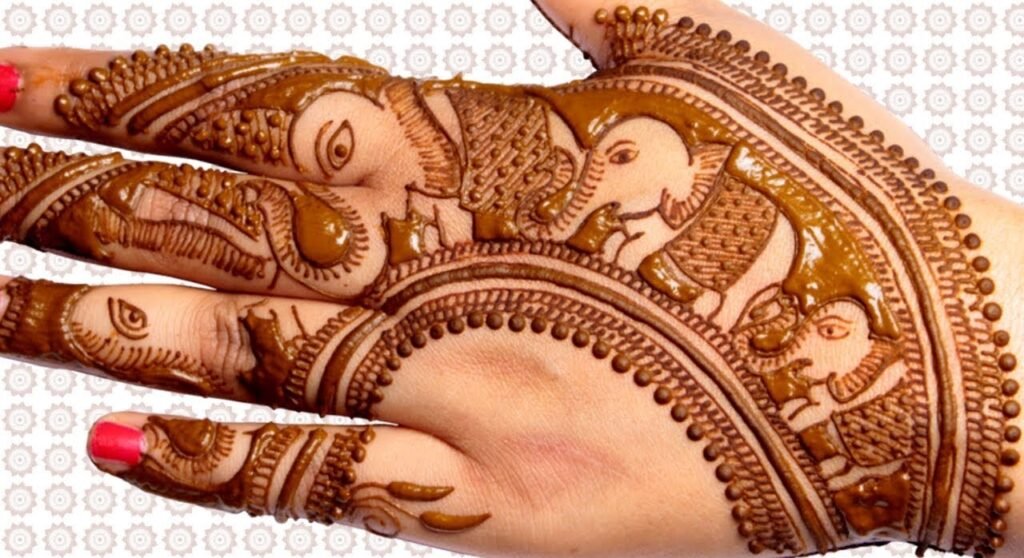
Regal Representation for the Bride
The traditional bridal hathi mehndi design is perhaps the most intricate and luxurious of all. Elephants are drawn carrying royal umbrellas or adorned with jewelry, symbolizing the bride’s entry into a new life like a queen entering her palace. These designs usually stretch from the wrist to the forearm and include a series of patterns like paisleys, flowers, and mandalas that lead to the elephant motif. The trunks of the elephants are often extended into swirling floral vines, and the entire scene can resemble a royal procession.
This style is particularly popular in Indian bridal mehndi, especially in North Indian and Rajasthani weddings. The precision required for the detailed depictions makes it a favorite among seasoned mehndi artists. While the elephant remains the focal point, the rest of the design creates a narrative around it, often integrating the groom’s name or initials subtly hidden within the elephant’s embellishments.
2. Minimalistic Hathi Mehndi Design
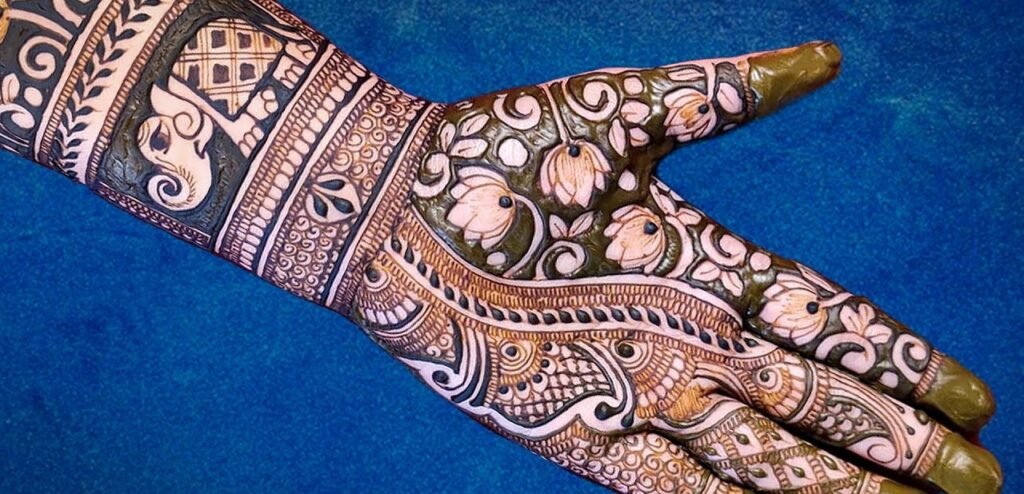
Simple Yet Elegant
For those who prefer elegance in simplicity, the minimalistic hathi mehndi design is a perfect choice. This design generally features a single elephant motif — small but detailed — placed either on the back of the hand, palm center, or wrist. Often, the design is accompanied by just a few accent elements like dots, small vines, or geometric borders.
It is an ideal pick for casual functions, baby showers, or even for bridesmaids who want to look festive without the overwhelming complexity of bridal mehndi. These designs are quick to apply but leave a lasting impression because of the symbolic nature of the hathi element.
3. Rajasthani Hathi Mehndi Design
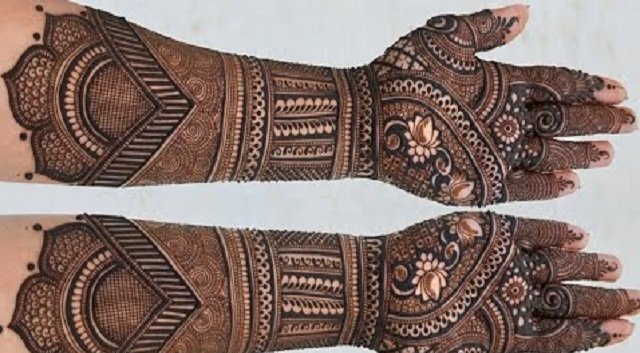
Royalty Meets Intricacy
Rajasthan, known for its palaces and royal history, inspires a unique hathi mehndi style. These designs include elaborately dressed elephants, sometimes shown carrying a prince or princess, and are often surrounded by architectural motifs like arches, domes, and jharokhas (windows). This creates an illusion of a miniature royal scene etched in henna.
These are typically used in pre-wedding functions or festive occasions like Karva Chauth and Teej. The artistry in this design lies in layering — shading, dots, and patterns like jali (net) work are used extensively to give depth and character. The Rajasthani style also uses symmetrical elements, making the design on both hands mirror each other beautifully.
4. Modern Fusion Hathi Mehndi Design
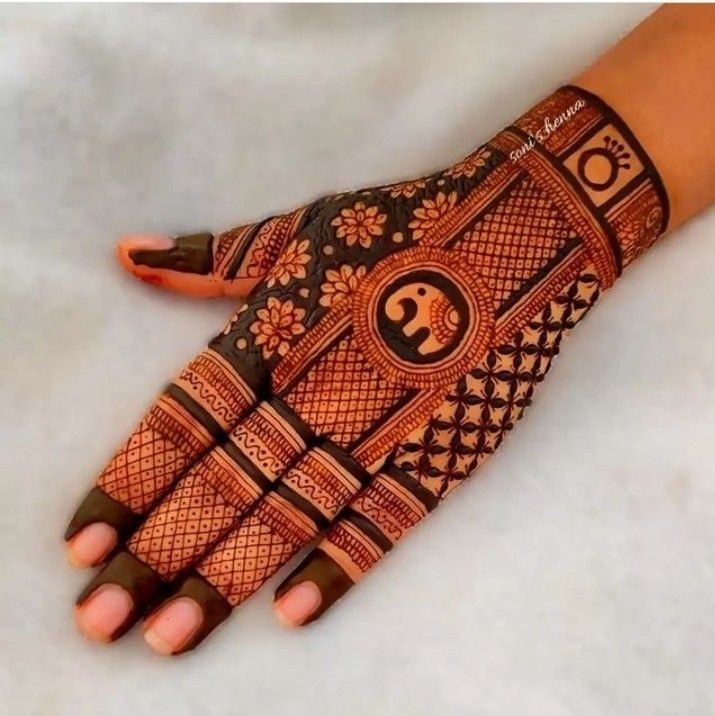
Blending Tradition with Contemporary Aesthetics
For the modern bride or fashion-forward woman, fusion hathi mehndi offers a delightful mix of classic and contemporary elements. In these designs, the elephant may be drawn in an abstract or stylized manner, sometimes even using negative space art. Alongside the hathi, you might find patterns like mandalas, lotus motifs, or even feathers and peacock elements.
This kind of design is especially popular among those who want something unique and tailored. Artists use a combination of traditional henna and modern illustration techniques, making each design look like a custom piece of art. Fusion hathi mehndi is often used in destination weddings and theme-based ceremonies where both modern aesthetics and cultural roots are celebrated.
5. Palm-Focused Hathi Mehndi Design
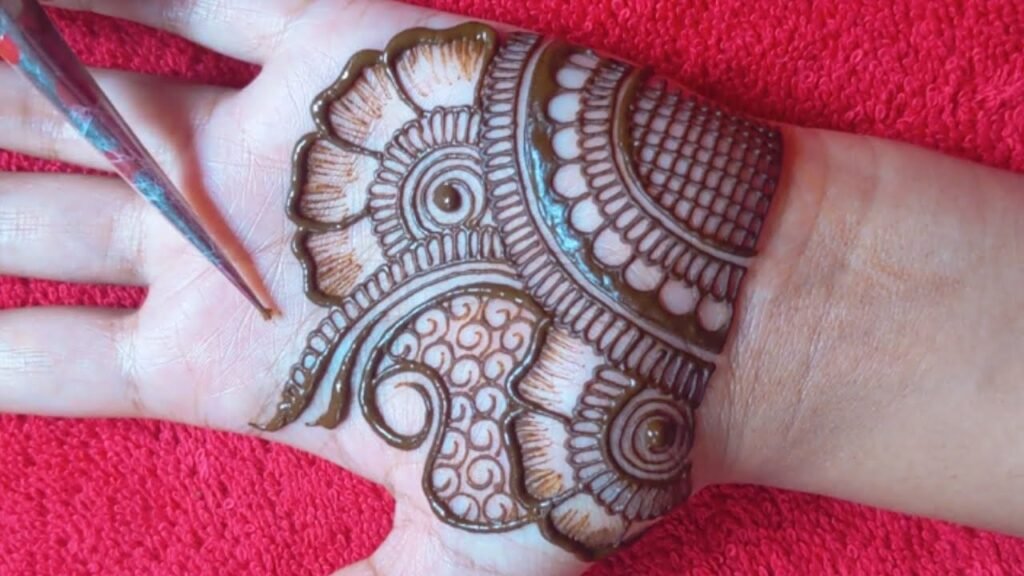
Center of Attraction
The palm-focused hathi mehndi design gives central importance to the elephant, usually placing it right at the center of the palm, often with symmetrical decorations radiating outward. The space around the hathi is filled with intricate details such as floral vines, jaali work, and spirals that frame the main motif beautifully.
What sets this design apart is its ability to draw attention directly to the hand, making it a great choice for brides and bridesmaids alike. The elephant in the palm is often embellished with miniature bells, anklets, or even a palace-style howdah (seat), giving it a rich, traditional feel.
6. Full Hand Hathi Mehndi Design
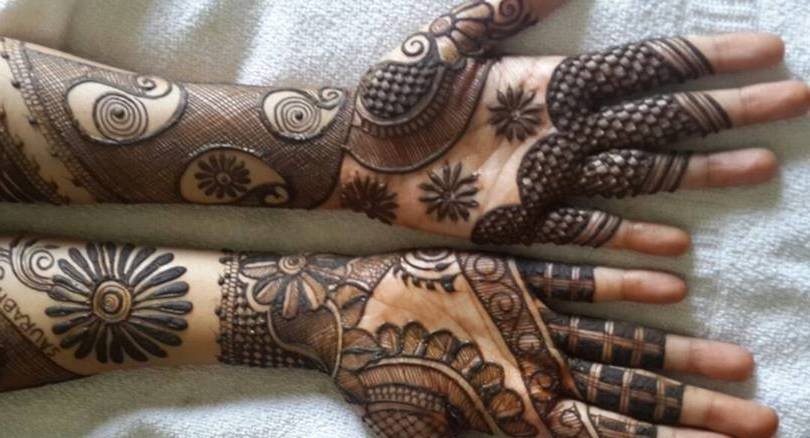
All-Inclusive Beauty
Full hand hathi mehndi designs are a feast for the eyes. These designs cover the entire hand, from fingertips to wrist or even up to the elbows, with multiple elephant motifs scattered throughout. Often, each finger may hold a different design element, like tiny elephants, palace elements, or peacock feathers, while the palm features a larger hathi surrounded by floral and abstract patterns.
The symmetry in this style plays a major role, with the elephants usually positioned facing each other or in a line that tells a story. Ideal for traditional weddings, sangeet nights, or major festive occasions like Diwali and Eid, these designs showcase the skill of the artist while adding a rich, cultural touch to the wearer’s look.
Flowing Patterns and Bold Lines
Arabic mehndi is known for its bold outlines and flowing designs, which makes it a unique base for integrating hathi motifs. In Arabic hathi mehndi designs, the elephants are drawn with bold curves, often placed diagonally across the hand or arm to match the characteristic Arabic flow.
The elephants may be surrounded by roses, leaves, and dotted patterns that stretch gracefully from one corner to another. Because Arabic mehndi is less dense than Indian styles, it gives a more spacious and breathable appearance, making it perfect for summer weddings or outdoor functions.
A Royal Impression from Behind
The back hand hathi mehndi design focuses on the dorsal side of the hand, often placing the elephant at the center with floral vines moving up toward the fingers or down toward the wrist. These designs are particularly elegant and are designed to complement jewelry like haath phools (hand chains) or bangles.
Sometimes, a pair of facing elephants is drawn, creating a symmetrical masterpiece that adds a hint of royal drama. The fingertips may be left plain or decorated with minimalistic dots and lines, depending on personal preference.
Adorable and Fun
Mehndi isn’t just for adults — kids also enjoy the charm of henna during weddings and festivals. The hathi mehndi designs for kids are usually simpler and cuter, often featuring cartoon-like elephants, smiley faces, and heart-shaped patterns. These designs are typically placed on the back of the hand or just one or two fingers.
Due to the shorter application time and playful aesthetic, these designs are loved by kids and parents alike. They serve as a great way to involve young ones in the festivities without overwhelming them with detailed art.
Beauty from Head to Toe
While most mehndi is applied to the hands, foot mehndi is a rising trend — especially for brides and dancers. Hathi mehndi designs for the feet often mimic the structure of an anklet or payal, with the elephant serving as the central motif near the ankle or heel.
These designs may include chains, bells, and floral motifs extending down to the toes. Elephants here may be drawn in profile with intricate coverings, giving a temple or procession-like appearance. This style is perfect for bridal looks, classical dance performances, or even cultural photo shoots.
Table of Contents
Conclusion
The Hathi Mehndi Design is more than just a decorative pattern — it’s a cultural statement that combines tradition, artistry, and symbolism. Each variation of hathi design, whether minimalistic or regal, adds a different flavor to your overall mehndi experience. Elephants, often seen as symbols of good luck, strength, and royalty, lend themselves beautifully to the storytelling nature of mehndi art. Whether you’re a bride, bridesmaid, or a festival-goer looking to embrace your heritage in style, one of these top 10 hathi mehndi designs will surely resonate with your aesthetic and cultural spirit.
If you’re preparing for a special occasion, consider trying one of these exquisite styles. Always remember to choose a skilled mehndi artist who understands the intricacies of hathi motifs to ensure your design is both meaningful and visually stunning.
Also read Top 10 Mehndi Back Side Designs: Stunning Ideas for Every Occasion


